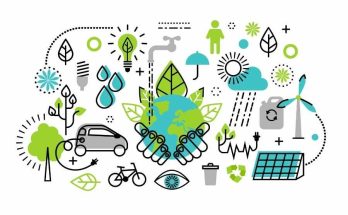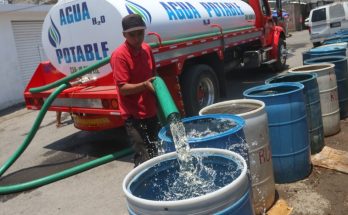By Alejandro Angulo
Among the main challenges the world will face in the coming years is the cost of living. This is particularly so in the short term. Climate change and environmental risks are also great concerns for the next decade, as noted at the World Economic Forum, recently held in Davos. These risks are exacerbated by the speed of deglobalization.
Climate change will affect tangible assets, such as real estate, which is linked to the economy and inflation. Along with real estate, farmland will be affected. These two are the largest producers of harmful emissions, and may suffer the greatest economic and financial impact.
Energy transitioning will remain slow in the coming years, and therefore the use of fossil fuels will continue. From this, we can deduce that there will be an increase in oil prices, possibly rising to as high as US$100 per barrel. Metals needed for solar and wind energy, grid infrastructure, hybrid and electric vehicles, and batteries, will increase in price. Consequently, the price of oil and metals will aggravate inflation.
Real estate is responsible for 40% of global emissions, and this sector is expected to continue growing through 2050. A transition will be necessary to reduce their emissions, and that may increase the cost of building by up to 20% of the net asset value. Macroeconomic imbalances from extreme natural events demand large expenditures, which adds to inflation.
The new carbon tax and the elimination of fossil fuel subsidies are factors that will increase inflation. These charges increase social tension because the cost is passed on to the consumers. Even though these new regulations are meant to decrease pollution, the tax is regressive, because the poorest members of society have to allocate a greater proportion of their income to purchase fuel or public transportation.
It seems that despite all of this, the futures markets have accepted that the transition as irreversible. Financing oil companies has become more expensive due to fears of stranded assets or the imposition of stricter regulations. All this has lowered the rate of investments, which has raised the price of fuels and contributes to inflation. All these factors will speed up the transition to new fuel sources, but the process requires time. Meanwhile, they will affect inflation. These risks interact with each other to form a «polycrisis,» or multiple crises, which is defined as a set of risks leading to aggravating effects and unforeseeable consequences.
Although many consider rising prices the main challenge for the next 10 years, climate change cannot be ignored. One of the most tangible examples is the drought that the central areas of Mexico are going through, which affects the nation’s production of grains, meat, and dairy products. Another related risk is the rivalry for resources among the powerful. A major impact on society is from multiple migrations, such as by climate-displaced persons, social disintegration, cybercrime, environmental tariffs, and economic hostilities between large trading blocs. Along with rising inflation, we do not have enough systems to mitigate and adapt to climate change, and the ensuing natural catastrophes. This, and the loss of biodiversity, diminished natural resources, and large-scale environmental damage come together as the main global risks for the next 10 years.
Moody’s Investor Service recently estimated that insured losses from natural catastrophes in the last five years were about US$100 billion annually. According to reports, the rise in food and beverage prices slowed in the first week in February, with the rate dropping to 1.8% from a previous 2.7% per week. However, the feed index showed a monthly inflation of 6% average in the last four weeks.
In Mexico, the rate of increase in prices of agricultural products grew 0.51%, while energy prices and tariffs authorized by the government grew 0.62% in the same period. It is estimated that in January there were some significant product price increases. The price of bananas increased by 17.15%, and limes by 16.15% from the past year. Although the price of eggs did not appear in the report, in recent weeks their price per kilo, has increased by 39%. Prices are expected to climb because of the continuing drought. According to the National Meteorological Service (SMN) report, 79.51% of the country is considered to be abnormally dry to exceptionally dry. The probability of a dry or very dry winter was estimated at over 50%, which means the high probability of another drought during the first six months of 2023.
All of this indicates the need for early preventive measures to avoid the worst scenarios. In the livestock sector, ranchers can reduce the size of their herds; farmers can begin planting crops less susceptible to lack of water and implement more efficient irrigation technologies. More recycling and treatment technologies are needed, and citizens can help by reducing their daily water consumption.




